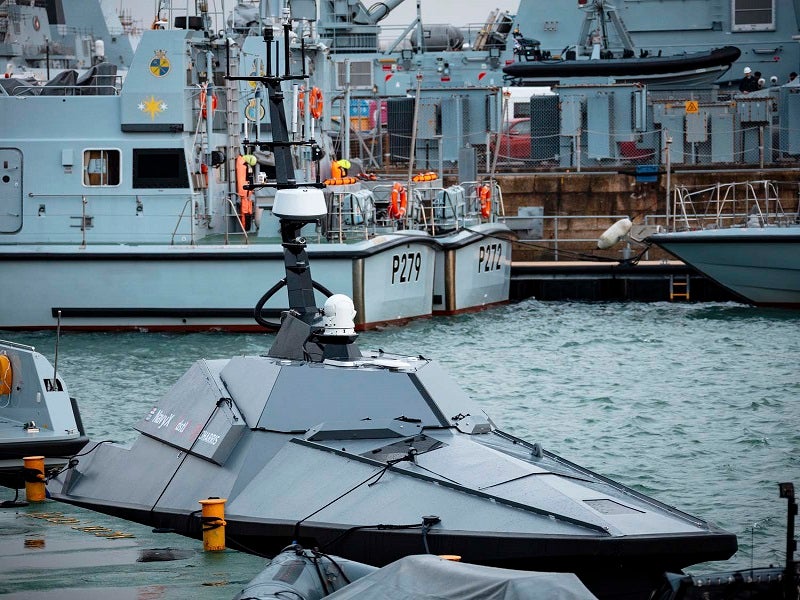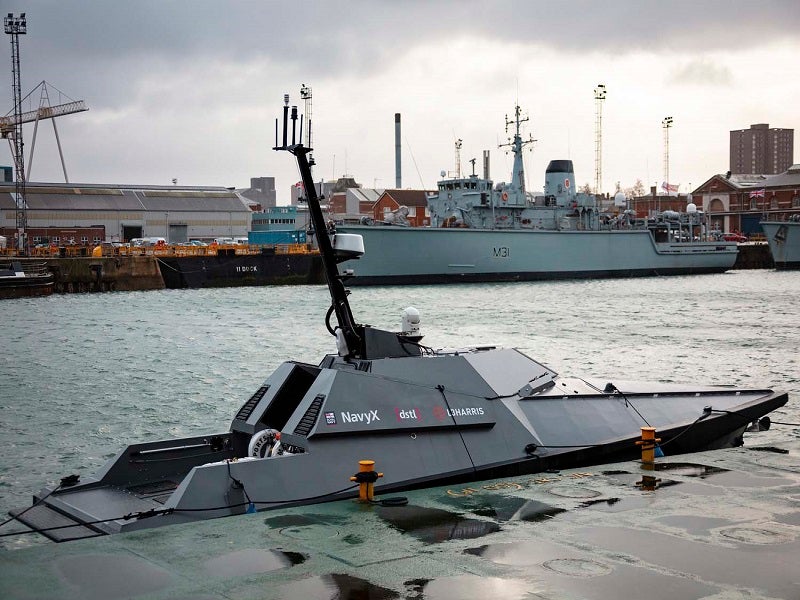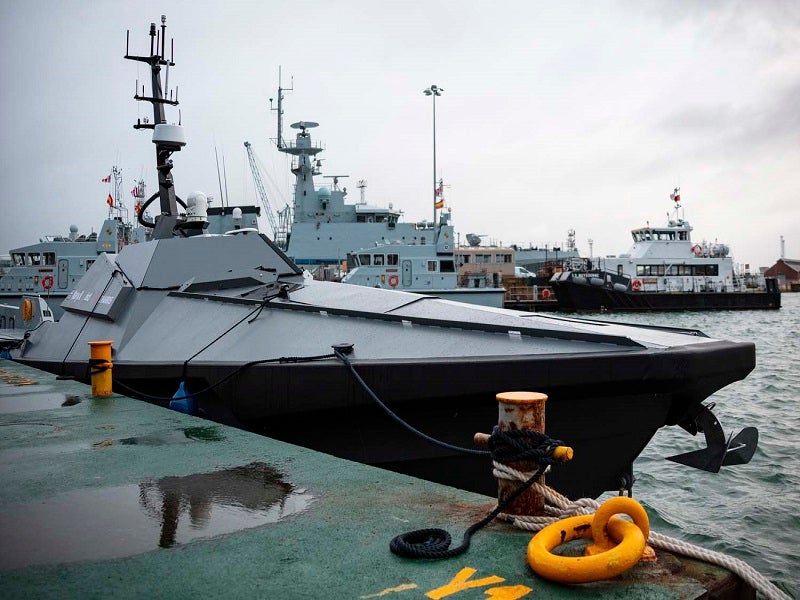The Maritime Demonstrator for Operational eXperimentation (MADFOX) is an autonomous surface vessel (ASV) demonstrator being developed and tested to meet the mission requirements of the UK Royal Navy, including maritime surveillance and force protection.
MADFOX is a successor to the MAST-13 ASV, which was developed by L3Harris Technologies (L3Harris). The unmanned surface vessel (USV) is part of the Royal Navy’s and Royal Marines’ plans to induct a large number of autonomous equipment and systems.
The unmanned vessel was delivered to the Royal Navy in March 2021.
MADFOX development details
The next-generation ASV builds on the successful design and testing of the MAST-13 system. L3Harris designed and built the MAST-13 USV for the UK Ministry of Defence’s (MoD) Defence Science and Technology Laboratory (DSTL). It developed autonomous technology and algorithms for the unmanned system.
MAST-13 demonstrated its capability to protect the Royal Navy’s warship HMS Argyll in a harbour force protection mission during the Defence & Security Equipment International (DSEI) event in London in 2019.
The USV was also demonstrated at the Autonomous Advance Force (AAF) 2.5 trial in Norway in May 2020. It was integrated with amphibious transport dock HMS Albion during the demonstration as part of the AAF 3.0 exercise in October 2020. The successful integration allowed the USV to be controlled remotely, including for the transit in and out of HMS Albion’s dock.
The MADFOX USV has been licensed to L3Harris by Ploughshare, an industrial integrator that coordinates with the DSTL to support the commercialisation of innovative technologies, under a licence agreement signed at the DSEI exhibition in September 2021.
The agreement covers the USV’s design, autonomous system, associated hardware and vessel to be offered to various international organisations and commercial operators in different configurations.
Testing of MADFOX ASV
MADFOX has been undergoing trials with the Royal Navy’s autonomy accelerator NavyX since its delivery. The potential of the ASV for surveillance and force protection applications is being evaluated.
NavyX is also using the system to study safety and regulatory compliance issues, and test the feasibility of the USV for new missions and payloads as well as its application in complex operations.
The ASV was controlled from land for the first time during trials in June 2021. A missile was launched from the MADFOX vessel during Nato’s REPMUS 2021 autonomous war games exercise in October 2021. The USV received target information from a land-based control centre before firing the missile. The information to the control centre was relayed by a Puma drone launched from the US Navy’s Spearhead-class expeditionary fast transport ship USNS Carson City.
MADFOX design
The MADFOX USV features a sharp bow section and central mast, while its stern section is designed to hold mission equipment and systems. It can be controlled autonomously using certain programmed algorithms to identify hostile ships and other threats or to collect information and intelligence about targets.
The autonomous vessel supports marines conducting missions in high-risk areas and reduces the risk to naval forces during conflicts.
The MADFOX USV has a length of approximately 13m (41ft).
MADFOX on-board sensors
The MAST-13 testbed that forms the basis for the MADFOX system is equipped with L3Harris’ WESCAM MX-10MS electro-optic/infra-red imaging sensor. The sensor was integrated on the MAST-13 test vehicle and evaluated thoroughly during trials in the English Channel in early-2020.
The WESCAM MX-10MS imaging sensor provides high-definition vision, enabling situational awareness, surveillance and reconnaissance, coastal observation, low-visibility, and night-time navigation capabilities.
Command and control
The ‘ASView’ control system for the ASV was integrated on HMS Albion during the AAF 2.5 trials in Norway. It was used to control the USV from a remote station on the ship and remotely pilot the USV into the warship’s dock.
The on-board sensor package gives full situational awareness to the vessel’s remote operator to navigate the ASV safely. Other command and control tasks were conducted using the Maritime Autonomous Platform Exploitation (MAPLE) integrated command and control system. MAPLE is a DSTL programme that aims to de-risk the integration of multiple unmanned systems into the combat system of a Royal Navy warship.










